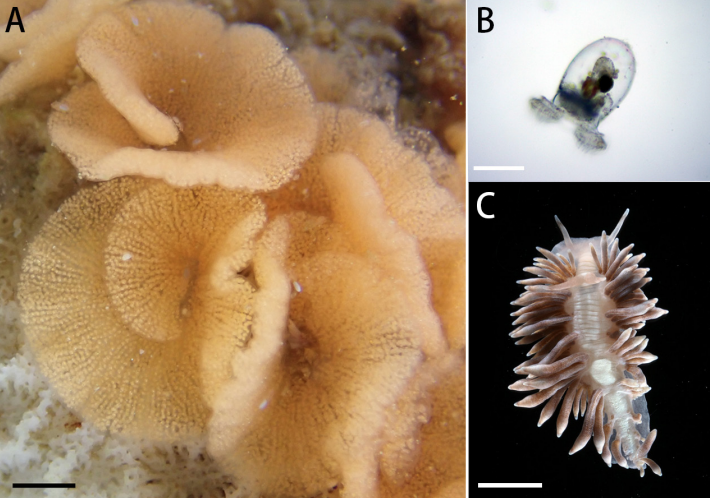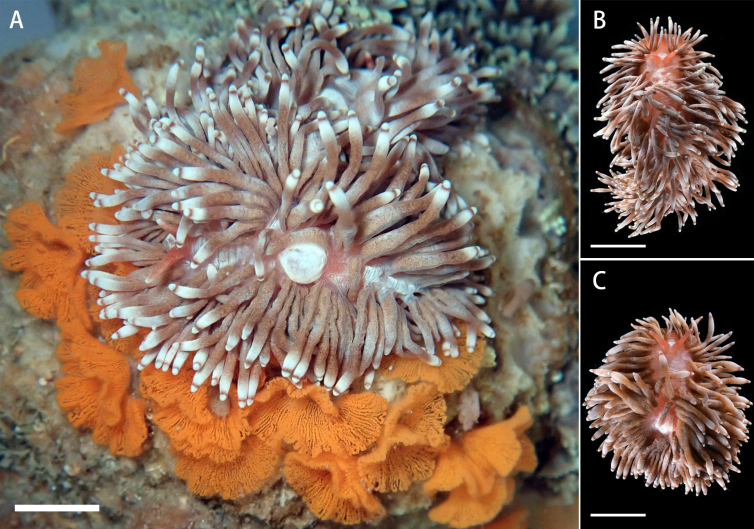As if reefkeeping wasn’t hard enough at times, and keeping Goniopora spp. Flowerpot corals in particular, we must now treat Gonis like we would treat Zoanthus or Montipora, and treat, and inspect them for predatory nudibranchs.
Goniopora naturally inhabits turbid, nutrient-rich waters and in the case of Aussie gonis, also waters that are rich in Manganese and Iron, from run-off from the land. The red and pink varieties we covet are easy to frag and do also seem easier to keep than the toxic green, long tentacled Goniopora stokesi, although our quest for ever more species and varieties like “Glitter” and “Ironman” inevitably leads us to import ever more.
That shallow, nutrient-rich environment and all those long, daytime extended polyps do attract pests however, including flatworms, boring crustaceans, and nudibranchs, and just like so many pest nudis, the Goniopora-eating nudibranch has evolved to look just like the Goniopora polyps it dines on.

Phestilla goniophaga
Phestilla goniophaga was described in 2020 by researchers in Hong Kong and with just one exception, all ten species are obligate predators of scleractinian corals. Many Phestilla eat Porites, a genus that Goniopora is related to, and P.goniophaga (meaning Goniopora eater,) has been found associated with G. columna, G. djiboutiensis and G. lobata. This devil’s spawn has two saving graces that help us to spot them. The first is its size, at 8-30mm it should be easy to spot in a dip bucket, and the second are its rafts of bright yellow egg masses.
Proprietary coral dips should be effective at killing the adults, along with manual removal of the eggs, but its worth treating all wild or maricultured Gonis, especially large polyp species, with extreme caution by first quarantining, then inspecting, dipping, removing, fragging if necessary, and then repeating the process over several weeks. The upside-down coral dip method using styrofoam may also help to dislodge the adults from the pulled-in polyps, along with plenty of shaking. There is no mention of natural predators, although wrasses would probably be the best place to start.
As Mike Paletta said recently, an increased prevalence of pests may be down to our increased success at keeping the host species in captivity, along with an increase in the number of corals that are maricultured. Both these factors ring true for Goniopora, and it was still classed by many as impossible to keep in captivity as recently as 15 years ago.
Citation
Hu J, Zhang Y, Yiu SKF, Xie JY, Qiu JW. 2020. A new species of predatory nudibranch (Gastropoda: Trinchesiidae) of the scleractinian coral Goniopora. Zool Stud 59:62. doi:10.6620/ZS.2020.59-62.



